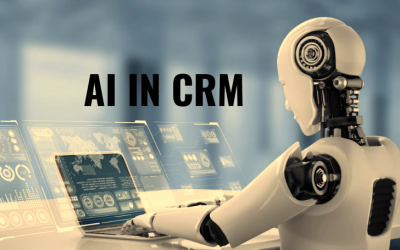The rapid adoption of AI demonstrates that software services can utilize AI to enhance client experiences. In this article, I would like you to snatch an espresso, set up your Python playground, and prepare to investigate and develop speech-to-text (STT) applications utilizing the flexible and easy-to-understand Python programming language.
Investigating AI Speech-To-Text Services with Python
There are some of the suppliers, for example,
- OpenAI Whisper
- DeepGram
- Rev AI
- Amazon Transcribe
- Google Cloud Speech-to-Text
What is Speech Recognition?
Speech recognition is the capacity of a program to recognize words and expressions in spoken language and convert them to human-readable text. In this article, you will figure out how you can change speech completely to text in Python, utilizing the Speech recognition library.
The Zenith Players in AI Speech-to-Text
Before jumping into the universe of Python coding, how about we get to know some leading AI Application Development Services providers specializing in speech-to-text abilities? The top tools include OpenAI, DeepGram, Rev AI, Amazon Transcribe, and Google Cloud Speech-to-Text, all with unique strengths. For our Python-driven investigation, we’ll focus on the adaptability and simplicity of execution presented by the SpeechRecognition library.
Step 1: Setting the Stage with Speech Recognition
To start our development process, we want to set the stage by introducing the Speech Recognition library. This procedure’s simplicity demonstrates Python’s dedication to user-friendly development:
Python Code: pip install SpeechRecognition
Step 2: Choosing the AI Powerhouse
In this task, we’ll use Google Cloud Speech-to-Text. The basic steps are to create a Google Cloud account, create a project, and empower the Speech-to-Text Programming interface. Getting an API key is a pivotal achievement in working with consistent combinations.
Step 3: Creating the Python Orchestra
Currently, Python Development Services providers create Python scripts that convert spoken words into digital text. Uses the SpeechRecognition library to introduce content recognizers, load sound records, and persistently integrate them with the Google Cloud Speech-to-Text API. Strong error handling systems ensure a smooth client experience:
Python Code
import speech_recognition as sr
def speech_to_text_google(audio_file):
recognizer = sr. Recognizer()
# Use Google Cloud Speech-to-Text APIs
with sr. AudioFile(audio_file) as source:
audio_data = recognizer.record(source)
try:
text = recognizer.recognize_google_cloud(
audio_data,
key="YOUR_GOOGLE_API_KEY", # Supplant with your Google Programming interface key
language="en-US" # Change language if necessary
)
print("Text from sound: ", text)
except sr. UnknownValueError:
print("Google Cloud Speech to-Text couldn't figure out the sound.")
except sr. RequestError with an e:
print(f"Could not demand results from Google Cloud Speech-to-Text Programming interface; { e}")
# Replace 'your_audio_file.wav' with the way to your sound record
speech_to_text_google('your_audio_file.wav')
Step 4: Customizing the Excursion
Adjust the content to your particular use case by supplanting ‘your_audio_file.wav’ with the way to your picked sound document. This level of customization guarantees that the application perfectly matches your objectives.
Step 5: Witness the Sorcery
Execute the Python content and witness the sorcery unfold as the Google Cloud Speech-to-Text Programming interface deciphers expressed words into clear, understandable text. It demonstrates the ease with which Python and AI Services can be integrated.
Speech-To-Text API s Use Cases: Favorite for Both Hardware and Software
Live Captions
Rev.AI can add captions and transcripts to recordings while continuously streaming media. For instance, Rev AI provides live inscribing coordination for Zoom.
Transcripts of Recordings
Video organization Loom uses Rev to translate recordings to its video hosting platform.
Video or Audio Editing
Hollywood studios and production organizations frequently use transcriptions for video editing. For example, to quickly track all suitable video films or to track scenes to be changed.
Video/Sound Accessibility
All organizations need to agree with accessibility laws and make video and audio open to all people. It is of great help to people who are hard of hearing or deaf. Rev can assist with making your product, applications, video, and sound more open.
Transcripts of Meetings
Virtual gatherings like Zoom meetings are becoming an ever-increasing number of commonplaces across enterprises. It is possible to decipher any recorded gathering. This is an extraordinary trade for taking gathering notes, or further developing gathering encounters for hard of hearing and nearly deaf people.
Records of Meetings
Narrative movie producers, writers, and media organizations use speech recognition for interviews.
Analytics
Switching gigantic amounts of sound or video over completely to texts makes a lot of data. You can involve this information for analysis in many ventures.
Police Body Cameras
Camera producers can add the capacity to translate video film. The client can search for text instead of watching numerous long periods of video, making legal disclosure simple and fulfilling the state’s legal requirements. Currently, Axon uses Rev for this. Beyond police body cameras, there are many applications for transcribed video footage.
Podcast
Podcasts are exploding in prevalence, and records of digital broadcasts can make an altogether new resource for any digital recording. Any podcast can benefit from SEO benefits and accessibility enhancements when converted to text.
Live Testimonies
The legal industry is turning out to be more virtual constantly. Affidavits, live court revealing, and more can profit from speech recognition.
Filling Interest: Investigating Elective Suppliers
While our investigation revolves around Google Cloud, Python’s flexibility permits you to investigate different suppliers like OpenAI, DeepGram, Rev AI, or Amazon Transcribe. Jump into their documentation, incorporate them into your Python applications, and open a universe of potential outcomes.
We are now in a place where spoken words seamlessly transform into digital text thanks to the combination of cutting-edge technology and programming languages that are easy to use. Thus, get your Python provider, leave on this thrilling coding experience, and lift your applications with the extraordinary force of artificial intelligence and voice acknowledgment.
Real-World Scenarios of Speech-to-Text Applications in Business
Improving Communication
In business settings, effective correspondence is central. Speech-to-text applications smooth out communication processes by changing verbally expressed words into text, resulting in a speedier and more precise spread of data. This demonstrates the value of gatherings, meetings, and cooperative undertakings.
Speech-to-Text Transcription Services for Documentation
Documentation is where Speech-to-Text finds its niche. Legal procedures, clinical counsels, and corporate gatherings benefit from automated transcription services, diminishing manual exertion and guaranteeing precise documentation.
Availability and Inclusivity
Voice recognition technology has improved accessibility for people with disabilities. Organizations consolidating STT applications add to a more comprehensive workplace, advancing variety and guaranteeing that data is open to all.
Most Recent Speech-to-text Robots and Machines
AI-Driven Assistants
AI-driven Speech recognition in virtual assistants and smart gadgets is transforming client collaborations. Voice-enacted collaborators like Siri, Alexa, and Google Assistant influence refined speech-to-text calculations, offering clients consistent and without hands insight.
Robotics in Industry
In modern settings, Speech-to-text capacities are coordinated into robots, empowering them to answer voice orders. Reducing the need for manual input contributes not only to efficiency but also to worker safety.
AI-Powered Translators
Speech-to-text innovation assumes an essential part in AI-fueled language interpretation to break down language barriers in business transactions and facilitate global communication, as these devices and applications can instantly translate spoken words in different languages.
Voice Perceiving Instruments: Shaping the Future of Business
Superior Client Assistance
Organizations are gradually using AI-powered voice recognition tools to upgrade client care. Speech-to-text comprehension and response to client requests are successful when intelligent voice reaction (IVR) frameworks and virtual client support specialists are used.
Data Analysis and Experiences
Voice acknowledgment apparatuses add to cutting-edge information investigation. By deciphering client input, class focus discussions, and statistical survey interviews, organizations gain vital knowledge for critical direction.
Safety Efforts
In the field of online protection, voice recognition devices are utilized for biometric verification. Voiceprints add an extra layer of safety, improving access control and defending touchy data.
The Future Effect on the Business World
Improved Efficiency
The consistent combination of simulated intelligence and speech-to-text advances is ready to support efficiency in organizations. Automation of routine tasks, hands-free data entry, and effective communication channels make a workflow more fluid and streamlined.
Customized Client Encounters
As voice recognition algorithms advance, organizations can tailor client encounters to individual inclinations. From customized menial helpers to tweaked item suggestions, the combination of AI and voice recognition tools guarantees another period of custom-made associations.
Evolving Customer Engagement
Businesses that utilize speech recognition tools powered by AI can engage with customers more intimately. Natural language processing empowers more instinctive communications, encouraging client unwaveringness and fulfillment.
Final Thought
Python’s use to create speech-to-text applications is an essential change in the organization’s business and collaboration. The impact on the business world is crucial, ranging from actual applications to the integration of speech-to-text in cutting-edge robots and machines. Embracing these developments, associations are at the front of improvement, driving capability, inclusivity, and a tweaked method for managing client participation. The AI Development Services team explores the ever-evolving visual and voice recognition of AI and speech, promising a dynamic and unusual future for organizations across the planet.







